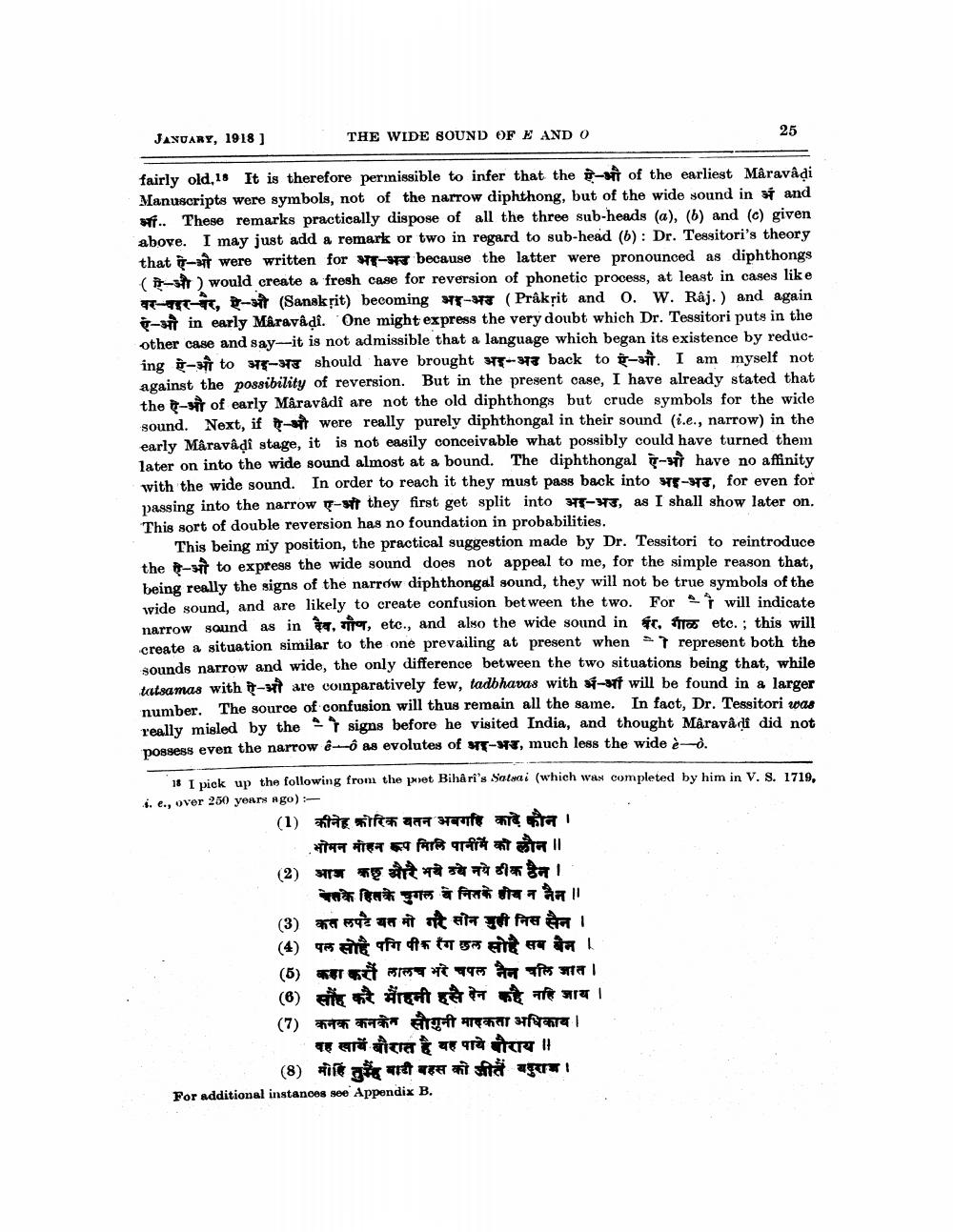________________
JANUARY, 1918 ]
THE WIDE BOUND OF E AND O
25
fairly old, 18 It is therefore perinissible to infer that the out of the earliest Mâravadi Manuscripts were symbols, not of the narrow diphthong, but of the wide sound in s and off. These remarks practically dispose of all the three sub-heads (a), (b) and (c) given above. I may just add a remark or two in regard to sub-head (b): Dr. Tessitori's theory that were written for W-*because the latter were pronounced as diphthongs (it-tr) would create a fresh case for reversion of phonetic process, at least in cases like
- - , -it (Sanskrit) becoming 978-** (Prakrit and 0. W. Raj.) and again -sit in early Maravâdi. One might express the very doubt which Dr. Tessitori puts in the other case and say-it is not admissible that a language which began its existence by reducine -औ to भर-अउ should have brought अइ-अर back to ऐ-औ. I am myself not against the possibility of reversion. But in the present case, I have already stated that the O- of early Mâravâdî are not the old diphthongs but crude symbols for the wide sound. Next, if i t were really purely diphthongal in their sound (i.e., narrow) in the early Mâravadi stage, it is not easily conceivable what possibly could have turned them later on into the wide sound almost at a bound. The diphthongal - have no affinity with the wide sound. In order to reach it they must pass back into 98-972, for even for passing into the narrow T-sif they first get split into 97-98, as I shall show later on. This sort of double reversion has no foundation in probabilities.
This being my position, the practical suggestion made by Dr. Tessitori to reintroduce the -it to express the wide sound does not appeal to me, for the simple reason that, being really the signs of the narrow diphthongal sound, they will not be true symbols of the wide sound, and are likely to create confusion between the two. For will indicate narrow sound as in 4. TT, etc., and also the wide sound in fr. for etc. : this will create a situation similar to the one prevailing at present when a represent both the sounds narrow and wide, the only difference between the two situations being that, while tatsamas with - are comparatively few, tadbhavas with -of will be found in a larger number. The source of confusion will thus remain all the same. In fact, Dr. Tessitori was really misled by the signs before he visited India, and thought Maravadi did not possess even the narrow ê as evolutes of MT-92, much less the wide èÒ.
18 I pick up the following from the poet Bihari's Salmi (which was completed by him in V. S. 1719, 1. e., over 250 years ago)
(1) tag wifi 49 Hafta Ara
..भोमन मोहन रूप मिलि पानी को लौन ॥ (2)
al सके हिसके चुगल वे नितके होव न नैन ।। (3) ** ?
a o ata (4) art of fitt er al (5) *** *79 Brut as a (6) Pita Arget get TFT (7) *** * argraferara
वह खायें बौरात है वह पाये बौराय॥
(8) si ate * agus ! For additional instances soe Appendix B.




